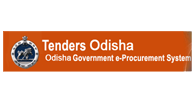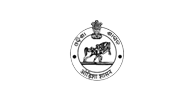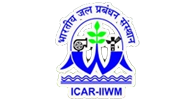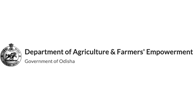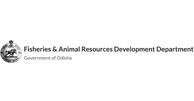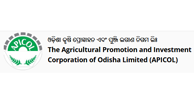Canal efficiency is compromised due to inadequate maintenance, incomplete infrastructure, and lack of water measurement systems. This leads to significant irrigation water loss during conveyance. As a result, only a single crop is typically cultivated during the monsoon season, with no crops grown in rabi or summer, reducing overall agricultural productivity. Implementing an accounting procedure through IoT enabled low-cost water measuring device for water distribution in canal systems can help optimize water use and improve crop water productivity. This would enable efficient control of water losses and encourage the cultivation of diversified crops in the command area, especially during the post-monsoon season.
Under this backdrop, this project is being undertaken by the joint collaboration of Indian Council of Agricultural Research (ICAR)-International Water Management Institute (IWMI), Bhubaneswar and CAD-PIM and OPICRA, MoWR, Govt. of Odisha under OFWM activities. Devices and the sensing systems including the IoT enabled mobile applications developed by ICAR-IIWM are being tested and validated through the pilot field demonstration in the selected command area in Odisha.
Objectives
- Installation of low cost and IoT enabled digital water measurement and soil moisture sensing system in the field channel of a canal command.
- Performance evaluation of digital systems in enhancing agricultural water productivity compared to the conventional practice in the study region.
- Technology dissemination and capacity building for subsequent up scaling of the devices in the canal commands.
Duration of the Project
Two years (2024-25 to 2025-26)
Expected Output
- Demonstration and performance evaluation of the developed digital water measuring and soil moisture sensing system for judicious irrigation scheduling in the selected canal command of Odisha in a pilot scale would assist the stakeholders to understand the efficacy of the technology for possible replication.
- A data base on water demand and supply in the field scale will assist the line departments and policy makers for developing guidelines and SOPs pertaining to supply of irrigation as per the crop water demand to save water and enhance water productivity.
- Policy advocacy on installation on such systems in the canal command would lead to attain sustainability and green credit to realize the SDGs.
- Training and capacity building activities on use of digital devices will lead to different interventions (viz. crop diversification to high value crops and advanced irrigation methods, conjunctive irrigation) in canal commands to enhance climate resilience of the system and livelihood of stakeholders.
Progress of Work
- MOU has been signed between the Department of Water Resources (CAD &WM), Govt. of Odisha and ICAR-Indian Institute of Water Management, Bhubaneswar (Fig. 1).
- Project site (Harianta Distributary of Kakatpur- Puri Main Canal in Usuma village near Phulnakhara, Phulnakhara, Odisha) was finalized through meeting with the line Department of Water Resources (CAD&WM), Govt. of Odisha and the WUA (Pallishree). (Fig. 2)
- Data pertaining to canal network, canal discharge rate and rostering, soil texture and land use information were collected from Govt. of Odisha.
- Review of literature on soil moisture sensor and water measuring devices have been completed.
- Digital water measuring device has been installed in the field channel in the Usuma village and data is being recorded (Fig. 3)
- Baseline survey has been conducted and indices have been computed to understand the economic status of the farmers before the implementation of the project.
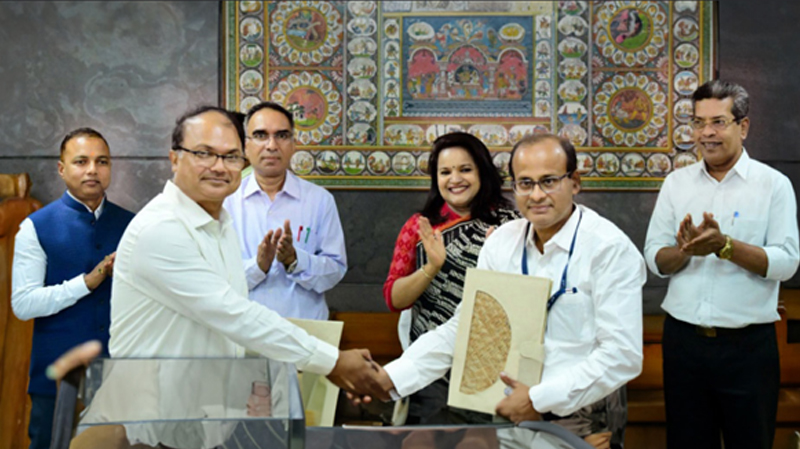
Fig. 1. Signing of MOU between Department of Water Resources (CAD &WM), Govt. of Odisha and ICAR-Indian Institute of Water Management, Bhubaneswar.
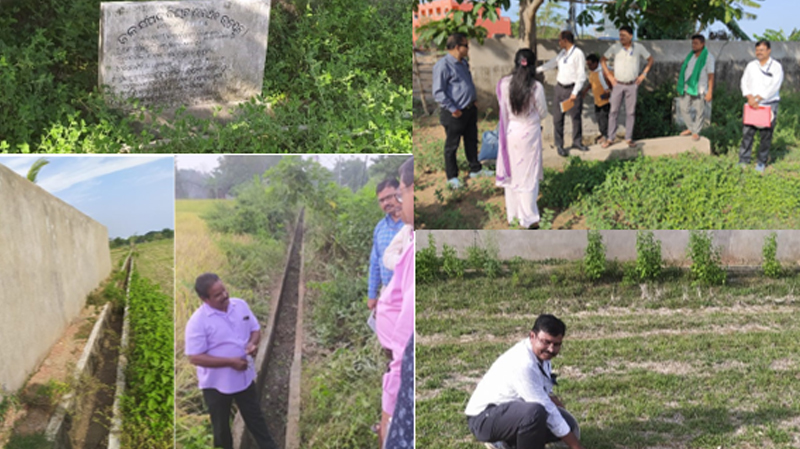
Fig. 2. Selection of Project site (Harianta Distributary of Kakatpur- Puri Main Canal in Usuma village near Phulnakhara, Phulnakhara, Odisha) in consolation with CAD-PIM officials and the President, Pallishree WUA and collection of soil samples from the project site.
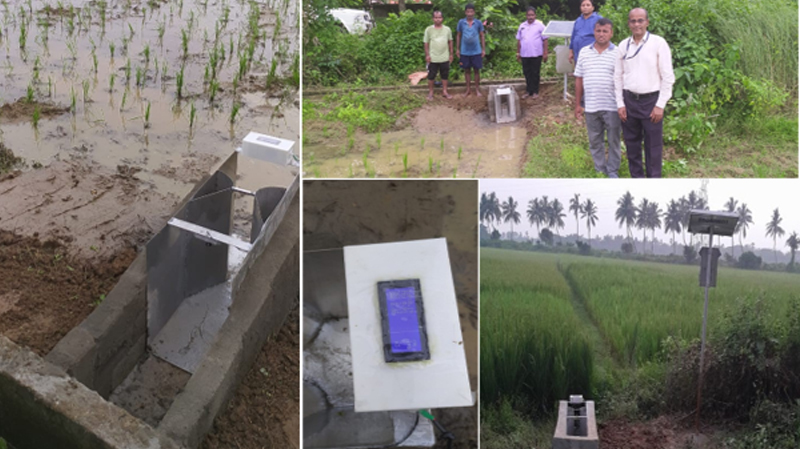
Fig. 3. Installation of IoT enabled Digital water measuring device in kharif rice field.
Table 1. Analysis of soil samples of the project site
| Parameter | Values |
|---|---|
| pH | 4.54± 0.35 |
| EC (µs/cm ) | 10.17 ±1.36 |
| SOC (%) | 0.44± 0.04 |
| Sand (%) | 35.10± 4.24 |
| Silt (%) | 39.50± 2.66 |
| Clay (%) | 25.40± 1.90 |
| Texture | Clay loam |
| Maximum Water holding capacity (%) | 38.99± 3.21 |
| FC (%) | 26.07 |
| PWP (%) | 16.80 |
| Ks (cm/day) | 9.58 |
| Available N (kg/ha) | 160.87± 22.29 |
| Available P (kg/ha) | 21.38± 9.38 |
| Available K (kg/ha) | 176.44± 44.03 |
Table 2. Summary of the baseline survey
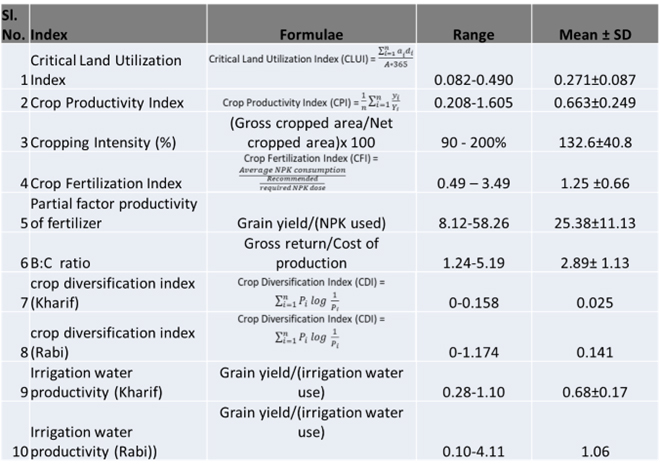
Results of the farmer’s field trial
One demonstration trial was conducted in the farmer’s field (Sri. Ashok Kumar Sahu) to estimate the water productivity of rice using digital water measuring device. The results are presented below.
- Grain yield: 5208 kg/ha
- Irrigation (Nursery+ Land preparation): 250 mm
- Post transplanting irrigation: 360 mm
- Effective Rainfall (Kharif): 606.2 mm (TR= 1061.9 mm)
- Total Water Use: 1216.2 mm
- Total Water Productivity: 0.43 kg/m3
Future plan of work
- Demonstration and performance evaluation of the developed digital water measuring and soil moisture sensing system in the project site for judicious irrigation scheduling vis-à-vis conventional farmers’ practice.
- Creation of an auxiliary water storage structure for its subsequent use for irrigation
- Promotion of crop diversification through effective utilization of stored water
- Training and capacity building activities on use of digital devices for improving livelihood of stakeholders.

